Nationality United States Movies Rock my Religion | Role Artist Name Dan Graham | |
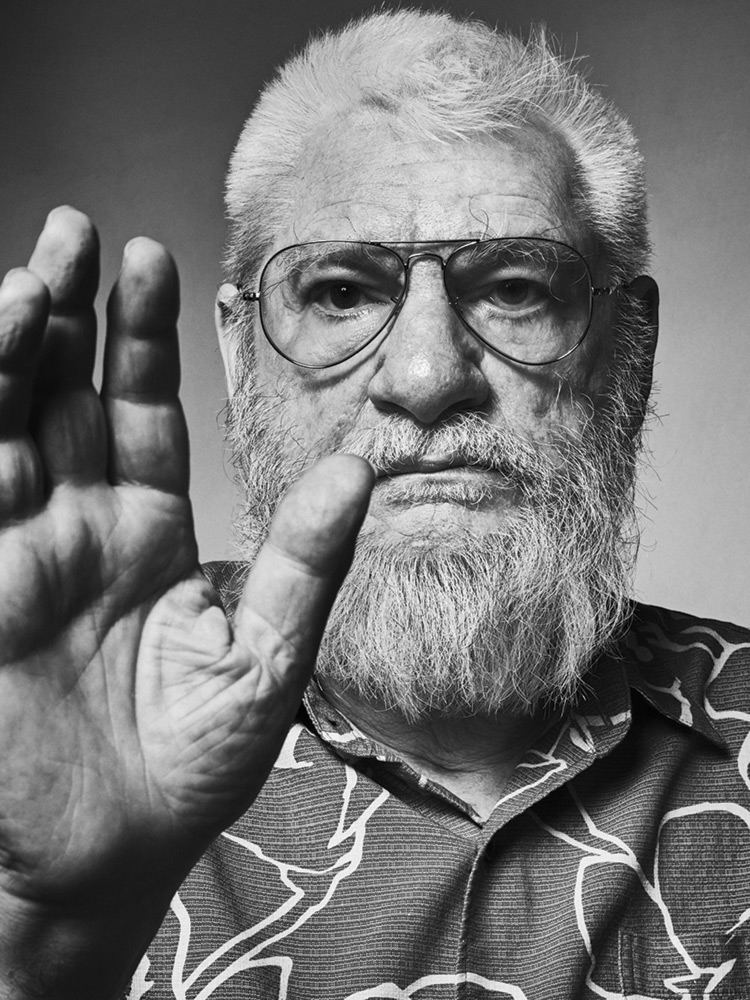 | ||
Known for Installation art, Sculpture, Photography, Writing, Video art, Performance art, Education, Art critic Notable work Performer/Audience/Mirror, Rock My Religion, Two-way Mirror Cylinder Inside Cube, Don't Trust Anyone Over 30, Yin/Yang Awards Coutts Contemporary Art Foundation Award, Skowhegan Medal for Mixed Media, French Vermeil Medal Education California Institute of the Arts Periods Conceptual art, Contemporary art, Minimalism Books Video - architecture - television, Akademie X: Lessons in Art + Life, Nuggets: New and Old Writin, Dan Graham: Films, Rock my religion - 1965‑1990 Similar People Tony Oursler, John Baldessari, Benjamin H D Buchloh, Dennis Crompton, Isaac Hayward Died February 19, 2022 (aged 79) New York City, U.S. | ||
Dan graham s greatest hits at the whitney
Daniel "Dan" Graham (March 31, 1942 – February 19, 2022) was an American artist, writer, and curator.
Contents
- Dan graham s greatest hits at the whitney
- Framing sculpture dan graham
- Childhood and early career
- Work
- Influences
- Photography
- Performance film and video
- Pavilions
- Selected pavilions
- Writings
- Collaborations
- Select artworks
- Exhibitions
- Selected solo exhibitions
- Death
- References
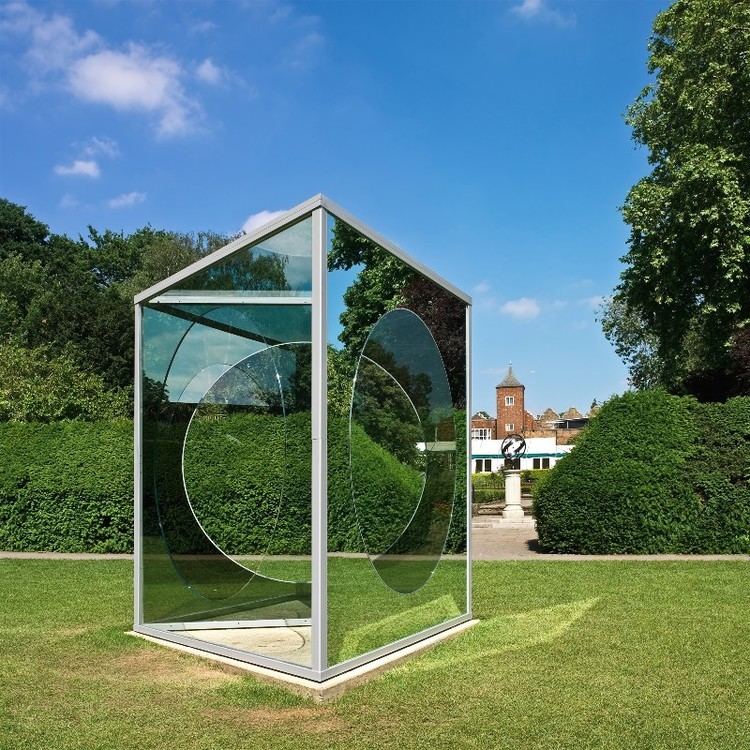
Graham grew up in New Jersey. In 1964 he began directing the John Daniels Gallery in New York, where he put on Sol LeWitt's first one-man show, and in groups shows, exhibited works of Donald Judd, Dan Flavin and Robert Smithson. Like these artists, Graham considered himself a writer-artist, publishing essays and reviews on rock music, Dwight D. Eisenhower's paintings, and Dean Martin's television show. His earliest work dealt with the magazine page, predating but often associated with Conceptual art. His work often focuses on cultural phenomena, and incorporates photography, video, performance art, glass and mirror structures. He lives and works in New York.
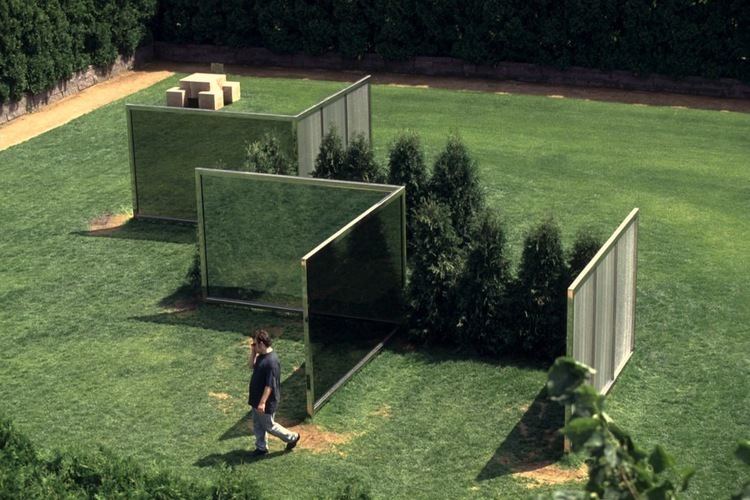
Framing sculpture dan graham
Childhood and early career
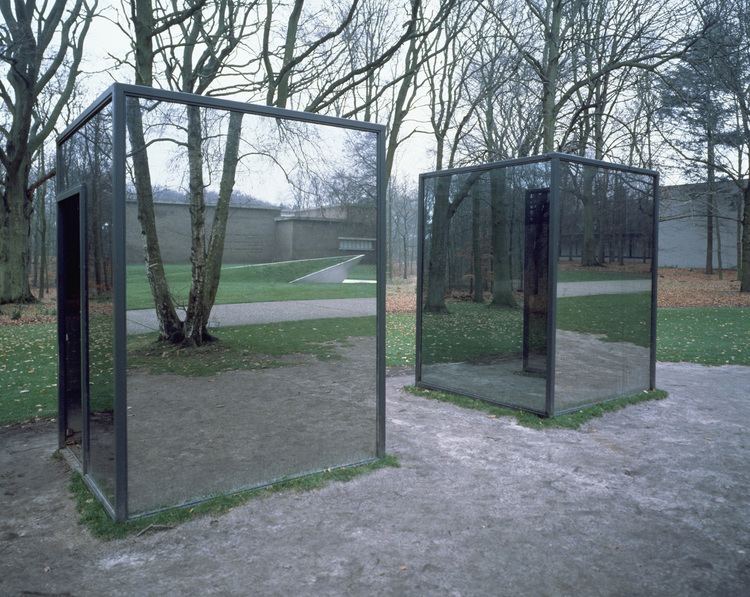
Dan Graham was born in Urbana, Illinois, the son of a chemist and an educational psychologist. When he was 3, Graham moved from Illinois to Winfield Township, New Jersey, and then to nearby Westfield when he was 14. He had no formal education after high school and is self-educated. During his teens, reading included Margaret Mead, Claude Lévi-Strauss, the literary critic Leslie Fiedler and the French Nouveau Roman writers. He wanted to be a writer, loved rock music which he wrote about critically and because he couldn't afford art supplies his early art took the form of magazine "articles".
Work
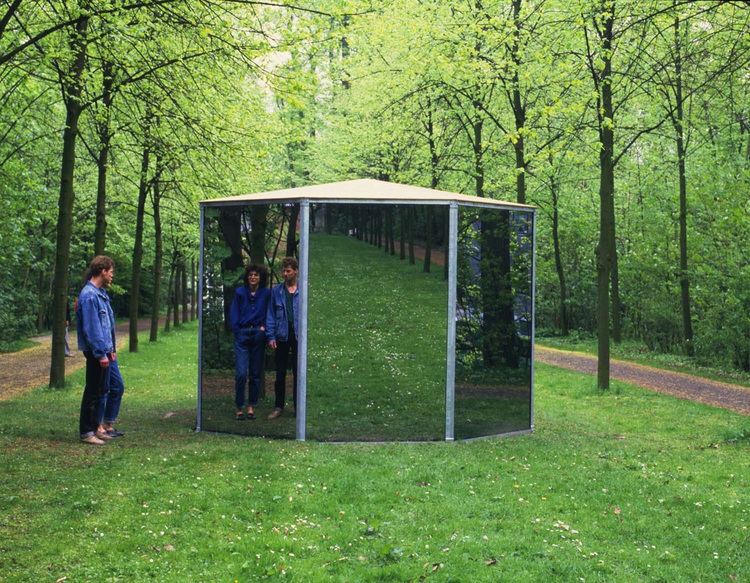
Graham began his art career in 1964, at the age of 22, when he founded the John Daniels Gallery in New York. He worked there until 1965, when he started creating his own conceptual pieces. During his time at the gallery, he exhibited works by minimalist artists such as Carl André, Sol LeWitt—LeWitt's first solo gallery show, Donald Judd, Robert Smithson, Dan Flavin and Ward Jackson.

In the past thirty years, Dan Graham proved himself to be a wide-ranging artist. His work consists of performance art, installations, video, sculpture, and photography. Few of Graham’s works have been commissioned or exhibited in the United States. In fact, the only major work commissioned in the U.S. in the last decade was the Rooftop Urban Park Project, in which he designed the piece Two-Way Mirror Cylinder Inside Cube and Video Salon (1981–1991). Some other commissions in the U.S. are Yin/Yang at MIT, the labyrinth at the Minneapolis Sculpture Garden, and at Middlebury College, and in Madison Square Park.
Graham's work was always firmly based within conceptual art practice. Early examples were photographs and numerological sequences, often printed in magazines, for example Figurative (1965) and Schema (1966). With the latter Graham draws on the actual physical structure of the magazine in which it is printed for the content of the work itself. As such the same work changes according to its physical/structural location within the world. His early breakthrough-work however was a series of magazine-style photographs with text, Homes for America (1966–67), which counterpoints the monotonous and alienating effect of 1960's housing developments with their supposed desirability and the physical-geometry of a printed article. Other works include Site Effects/Common Drugs (1966) and Detumescence (1966).
After this Graham broadened his conceptual practice development with performance, film, video and sculpture including Rock My Religion (1984) and Performer/Audience/Mirror (1975). His installations such as Public Space/Two Audiences (1976) or Yesterday/Today (1975) further inspired his move to the indoor and outdoor pavilions he most recently designs. His many conceptual pavilions including Two Way Mirror with Hedge Labyrinth (1989) and Two Way Mirror and Open Wood Screen Triangular Pavilion (1990) have increased his popularity as an artist.
In addition to his visual works, he published a large array of critical and speculative writing.
Influences
In Sarah Lehrer-Graiwer's publication Pep Talk in 2009, Graham gave "Artists' and Architects' Work That Influenced Me" (in alphabetical order): Michael Asher, Larry Bell, Flavin, Itsuko Hasegawa, LeWitt, Roy Lichtenstein, Robert Mangold, Bruce Nauman, Claes Oldenburg, Kazuo Shinohara, Michael Snow, Mies van der Rohe and Robert Venturi.
Writer Brian Wallis has said that Graham’s works “displayed a profound faith in the idea of the present, [he] sought to comprehend post-war American culture through imaginative new forms of analytical investigation, facto-graphic reportage, and quasi-scientific mappings of space/time relationships.” Graham's work was influenced by the social change of the Civil Rights Movement, The Vietnam War, the Women's liberation movement as well as many other cultural changes. These prolific events and changes in history affected the conceptual art and minimalist movements.
Like LeWitt, Morris, Smithson and Flavin, Graham worked at the intersection of minimalism and conceptual art. Graham exhibited a predominantly minimalist aesthetic in his earlier photographs and prints. His prints of numeric sequences, words, graphs, and graphics strongly reflect his minimalist qualities. His later works have become very conceptual, and examine the relationships between interior space, exterior space, and the perception of the viewer when anticipated boundaries are changed.
Photography
Following the closure of his Manhattan-based space, the John Daniels Gallery, in the late 1960s, Graham turned to magazines as the primary venue for his art. In addition to contributing art and music criticism, Graham created text and photographic pieces often published between the magazines’ advertisements. Of his magazine work, Graham said,
There was this whole idea of defeating monetary value in the air in the ’60s, so my idea was to put things in magazine pages where they’d be disposable with no value. And that was a hybrid also because the work was a combination of art criticism and essay: magazine page as an artwork.
These photographs question the relationship between public and private architecture and the ways in which each space affects behavior. Some of his first conceptual works dealt with different forms of printed artwork of numeric sequences. In 1965 Graham began shooting color photographs for his series Homes For America. All the photographs taken were of single-family homes, new shopping precincts, truck depots and roadside diners around the American suburbs. This photo series, one of the first artworks in the space of text, was published as a twopage spread in Arts Magazine. The "article" is an assembly of texts including his photographs. The photographs were also chosen for the exhibition "Projected Art" at the Finch College Museum of Art. In 1969, Graham focused on performance and film that explored the social dynamic of the audience, incorporating them into the work, leading to an 80 ft photo series, Sunset to Sunrise.
Performance, film and video
From the late 1960s into the late 70's, Graham shifted toward a largely performance-based practice, incorporating film and the new medium of video in his systematic investigations of cybernetics, phenomenology and embodiment. In 1969, he made his first film Sunset to Sunrise, in which the camera moves opposite to the course of sun, inverting the progression of time. This piece is emblematic of his filmic work that would extend into the early 1970s, in which he would explore “subjective, time-based processes” through perceptual, kinetic exercises, using the camera as an extension of his body and implicating the subjectivity of the viewer. Other films from this period include Two Correlated Rotations (1969), Roll (1970), and Body Press (1970–72), all three featuring the interaction of two cameras or the juxtaposition of two films. Roll (1970) was a performance exercise in phenomenology similar to Bruce Nauman's early films. Body Press, in which a naked man and woman stand back-to-back in a cylinder lined with concave mirrors filming themselves and their distorted reflections, introduces the mirrored image as a prominent theme for Graham, which he would explore extensively in his performance and video practice as well as his later architectural work.
Graham stated that his works are “models to define the limits of an idea of representation as the conventional limits which necessarily define the situation between the artist and spectator,” and his performances in the 1970s foreground this relational approach. In these works Graham explicitly invokes theories of structural linguistics, especially the work of Jacques Lacan. Graham’s 1972 performance piece Two Consciousness Projections underscores a preoccupation with phenomenological aspects of relationality, utilizing the reflective capacities of video feedback. In the performance, a woman sits in front of a monitor displaying her image from the live feed of a video camera held by a man behind the monitor and attempts to narrate her conscious mind, while the man describes her as he watches through the camera. This work presents an experiment in self-perception and representation, modulated by numerous mirroring agents—the woman’s own image on the monitor, the “image” of her depicted by the man, as well as both performers’ awareness of the audience. In his own writings, Graham articulates an interest in deconstructing the divisions between interior intention and visible behavior formed when looking at one’s reflection in a mirror, proposing video feedback as both a technical and conceptual means by which to achieve this. Many of Graham’s performance pieces work to exhibit and exploit the spontaneous interaction between thought and expression, inside and outside, extending this dissolution of barriers to dichotomies of performer and audience, private and public. Graham’s most complex interrogation of this is the performance Performer/Audience/Mirror (1977), in which he stands between a large mirror and an audience, describing himself, the audience, his reflection, and the audience’s reflection in sequential phases of continuous commentary. Expanding upon the themes in Two Consciousness Projections, this work implicates the audience in their own feedback cycle of self-perception.
Graham produced a number of videos that documented his performance works, such as the 1972 Past Future Split Attention, in which the conversation of two acquaintances becomes a cacophony of simultaneous speech and interruption. One other major example of a documented performance is Performance/Audience/Mirror (1975).
Graham also incorporated video into installations, creating environments where video technology is used to alter the viewer's own bodily experience. One example is the 1974 installation/performance Present Continuous Past(s), Graham began to use two-way mirror walls in relation to real reflections and time-delayed video projections. Also in 1974, he created an installation with a series of videos called "Time Delay Room", which used time-delayed Closed-circuit television cameras and video projections.
Lastly, Graham produced a number of video documentaries, such as Rock My Religion from (1983–84) and Minor Threat (1983). Rock My Religion (1984) explores rock music as an art form and draws a parallel between it and the development of the Shaker religion in America. He observes the changes in beliefs and superstitions in the Shaker religion since the 18th century, and relates them to the development of rock culture. The film has been distributed widely, and has included screenings at both institutional and counter-cultural venues across Europe and the US, including Lisson Gallery, Auto Italia South East and Whitney Museum of American Art. Minor Threat documents the youth culture surrounding the band of the same name. In it, Graham analyses the social implications of this subculture, treating it "as a tribal rite, a catalyst for the violence and frustration of its predominantly male, teenage audience."
Pavilions
Dan Graham’s artworks are said to blur the line between sculpture and architecture. Since the 1980s, Graham has been working on an ongoing series of freestanding, sculptural objects called pavilions; they represent a hybrid between a quasi-functional space and an installation that serves to expose processes of perception and certain expectations. Graham's popularity has grown since he started his walk-in pavilions and he has received commissions all over the world. His pavilions are steel and glass sculptures which create a different space which disorients the viewer from his or her usual surroundings or knowledge of space. They are made of a few huge panes of glass or mirror, or of half-mirrored glass that is both reflective and transparent. Graham often experiments with optics in his designs, utilising convex two-way mirrors, fish-eye lenses, and small pools of water to reflect the pavilion’s interior, including the tondos, the visitors and the sky outside the pavilion. Wooden lattice and steel are other materials most commonly used in his work.
The MIT Art Center calls his pavilions rigorously conceptual, uniquely beautiful, and insistently public. The pavilions create a unique experience for the viewer. His pavilions are created for the public experience. His pavilions combine architecture and art. Dan Graham’s pavilion works have been compared to Ryue Nishizawa and Kazuyo Sjima’s work on the Kanazawa Museum. The glass wall of the structure reflects and distorts light much like Grahams sculptures. The layered, but simplistic quality is said to be very much like Graham's. The structures are similar in their study of space and light.
In 1981, Graham started work on a decade long project in New York City. The work Two-Way Mirror Cylinder Inside Cube and Video Salon was part of the Rooftop Urban Park Project. Graham worked on the piece in collaboration with architects Mojdeh Baratloo and Clifton Balch. This transparent and reflective pavilion transformed the roof of 548 West 22nd Street into a rooftop park. The pavilion captures the surrounding landscape and changes of light creating an intense visual effect with the sky. The Two-Way Mirror Cylinder Inside Cube and Video Salon has become one of his most well-known works throughout his art career.
After numerous commissions in Europe, the Children’s Pavilion (1988–93) was actually the first piece Graham was commissioned to do in the United States. A collaboration with Jeff Wall, the pavilion is a very conceptual piece relating to the children of the nation. It is a circular shaped room with an oculus that is both transparent and reflective at the top, so the viewers on the outside of the building could look inside as well. Wall's nine circular framed photographs of children belonging to many nationalities and ethnic backgrounds surround the room. Each child is shown half-length and viewed from below against the background of a sky. In each image Wall chooses a different sky. In 1991, the Witte de With Center for Contemporary Art attempted to realise the pavilion on Rotterdam's Ommoord district; the plan was eventually abandoned in 1994. Related works include Children's Pavilion (Chambre d'Amis) (1986), Skateboard Pavilion (1989), and Funhouse for the Children of Saint-Janslein (1997–99).
The pavilion Girl’s Make-up Room (1997-00), which is related to projects that were created for the 1997 Skulptur Projekte Münster, is composed of two-way mirror glass with sliding doors made of perforated steel. Visitors are asked to enter the room and use make-up at a little table - the two-way mirror walls, however only produce a distorted reflection. The perforated steel walls are continuously producing changing ray patterns. Combined with the semi-mirrored glass these ray patterns create a "virtual world" that is changing with the light and is thus in a state of permanent flux.
For a temporary installation in the Metropolitan Museum of Art’s roof garden is, Hedge Two-Way Mirror Walkabout (2014) is a collaboration with the Swiss landscape architect Günther Vogt. The pavilion consists of an S-shaped curve of slightly reflective glass, bookended by two parallel ivy hedgerows. Later, Graham worked with designer Phoebe Philo to create an S-shaped steel-and-glass pavilion in which to show her spring/summer 2017 collection.
Selected pavilions
Other realized pavilions by Graham include:
Dan Graham Pavilions: a guide, edited by Josh Thorpe, was published in 2009 by Art Metropole in Toronto. Six Sculptures/Pavilions for Pleasure (2001), created in collaboration with Hauser & Wirth, documents six different pavilions by Graham that are in public places and have different functions.
Writings
Dan Graham made major contributions through his writing. He works as an art critic, writing revealing articles about fellow artists. He contributed inquisitorial ads in newspapers and writings in magazines. Most notably, from 1965 to 1969 he produced a series of texts, such as Schema (1966), which he inserted into mass-market magazines. He also wrote books along with other writers. Many of the books are a collection of essays about his works. The most read include Two Way Mirror Power: Selected Writings by Dan Graham on His Art, Half Square Half Crazy, and Sympathy for the Devil: Art and Rock and Roll since 1967.
Collaborations
For the Performa festival in 2007, Dan Graham designed the stage set made for New York-based band Japanther's performance. Graham collaborated previously with Japanther on the rock puppet opera Don't Trust Anyone Over Thirty: Entertainment by Dan Graham with Tony Oursler and Other Collaborators (2004).
Select artworks
Exhibitions
Graham's first solo show was held in 1969 at the John Daniels Gallery in New York. In 1991, an exhibition of his pavilions and photographs was held at the Lisson Gallery in London. Another important exhibition featuring Graham was "Public/Private", an exhibition that traveled to four different venues. The show, which included his pavilions, architectural photographs and models, performances, and video installations, had its opening in 1994 at the Moore College of Art and Design. In 2001, a retrospective was held covering his 35-year career. The museums holding the event included the Musee d'Art Moderne de la Ville in Paris, Kroller-Muller Museum in Otterlo, the Netherlands, and Kiasma Museum in Helsinki, Finland. In 2009, another major retropspective was mounted in the U.S., showing at the Museum of Contemporary Art, Los Angeles; Whitney Museum of American Art, New York and the Walker Art Center, Minneapolis. Graham's work has also been exhibited at the Venice Biennale (1976, 2003, 2004 and 2005), documentas V, VI, VII, IX, IX and X (1972, 1977, 1982, 1992 and 1997), and at Skulptur Projekte Münster '87 and '97.
Graham is represented by Hauser & Wirth, Zurich, Lisson Gallery, London, and Marian Goodman Gallery, New York.
Selected solo exhibitions
Death
Graham died in New York City on February 19, 2022, at the age of 79.
